The Mercedes M256 6-cylinder engine is a marvel of modern engineering, combining impressive power with remarkable efficiency. It’s the heart of many current Mercedes-Benz models, offering a smooth, strong driving experience enhanced by its innovative integrated starter-alternator system.
H
You’ve likely heard the buzz around the Mercedes M256 6-cylinder engine. Maybe you hear it purring in your E-Class or feel its refined power in your new C-Class. It’s a modern powerhouse, and its reputation for smooth acceleration and surprising fuel economy is well-deserved. But what exactly makes this engine so special? Is it just another engine, or does it have some unique tricks up its sleeve?
If you’re curious about the technology that gives your Mercedes-Benz its distinctive driving feel, you’ve come to the right place. We’re going to break down the genius of the M256 engine in a way that’s easy to understand. No complex jargon here, just straightforward insights into the engineering marvel that’s powering your drive.
Get ready to discover what makes the M256 a standout in the world of automotive engines!
What is the Mercedes M256 Engine?
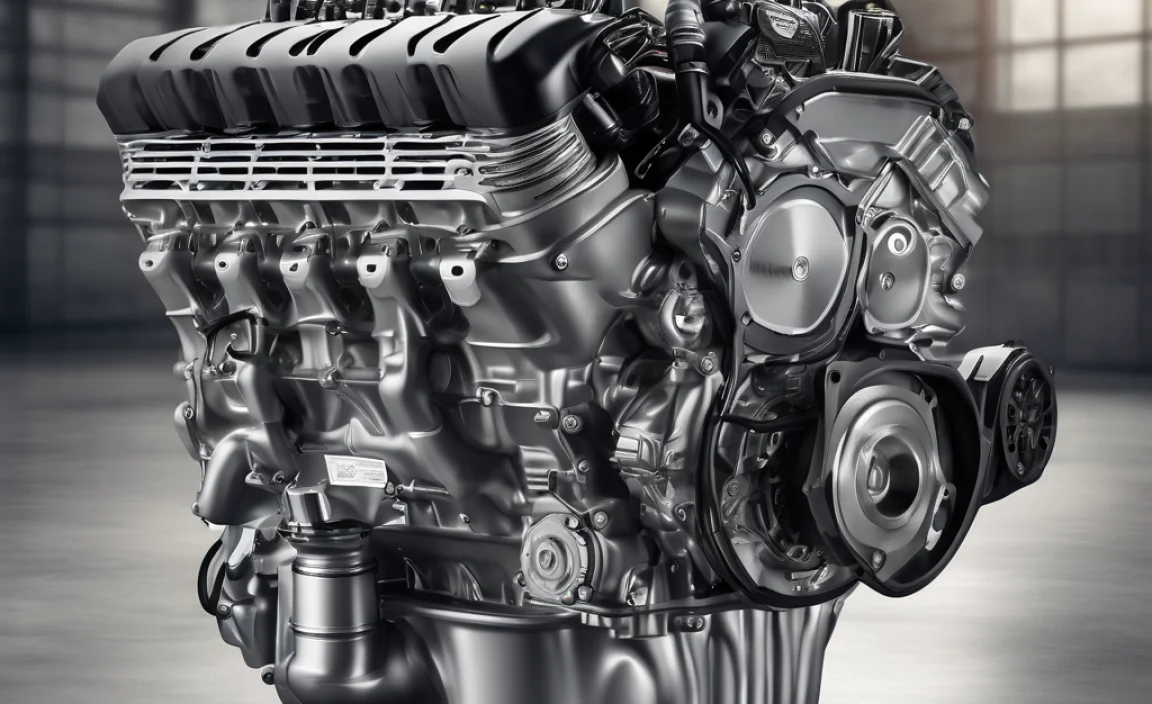
The Mercedes-Benz M256 is a family of turbocharged inline-six gasoline engines that debuted in 2017. It replaced the older M276 V6 engine. This engine series represents a significant step forward in Mercedes-Benz’s engine technology, focusing on improved performance, enhanced efficiency, and reduced emissions. It’s designed to deliver the smooth power delivery characteristic of a six-cylinder engine while incorporating cutting-edge features.
This engine is found in a wide range of Mercedes-Benz models, from the more accessible C-Class and E-Class to the luxurious S-Class and even some performance-oriented AMG variants. Its versatility and adaptability have made it the go-to powerplant for many of the brand’s most popular vehicles.
Key Innovations of the M256
The M256 isn’t just a standard internal combustion engine; it’s packed with innovative features that contribute to its “Genius Power.” Here are some of the most important ones:
- Integrated Starter-Alternator (ISG) or EQ Boost: This is arguably the most significant innovation. Instead of a traditional starter motor and alternator, the M256 uses an electric motor that acts as both. This system provides a power boost (EQ Boost), smoother start/stop operation, and enables additional functions like ‘coasting’ with the engine off.
- Electric Auxiliary Compressor (eZV): Many M256 variants are equipped with an electric auxiliary compressor. This works alongside the turbocharger to provide instant torque and eliminate turbo lag, especially at lower engine speeds.
- Advanced Turbocharging: The engine uses a twin-scroll turbocharger system (or a single variable geometry turbocharger in some applications), which optimizes exhaust gas flow to the turbine. This results in quicker spool-up and more responsive power delivery.
- Advanced Fuel Injection: High-pressure direct injection systems ensure precise fuel delivery, leading to better combustion efficiency, more power, and lower emissions.
- All-Aluminum Construction: The engine block and cylinder head are made from lightweight aluminum, reducing overall vehicle weight and improving fuel economy.
- Stepless Variable Valve Timing (VVT): This system optimizes valve operation for different engine speeds and loads, improving performance and efficiency across the rev range.
Understanding EQ Boost and the ISG
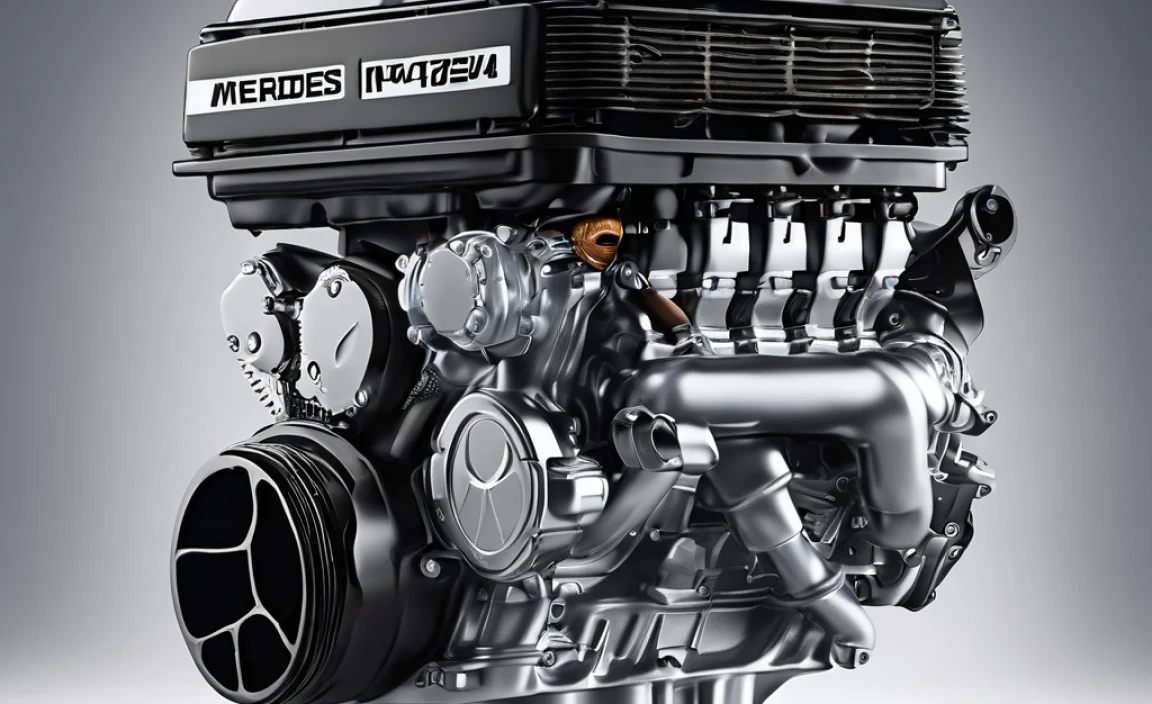
The Integrated Starter-Alternator (ISG), often seen marketed as “EQ Boost,” is a crucial component of the M256 engine. It’s a small electric motor sandwiched between the engine and the transmission. Let’s break down what it does and why it’s so clever for everyday drivers.
How EQ Boost Works
Think of the ISG as an electric helper for the gasoline engine. During operation, it manages several tasks:
- Starting: When you start the car, the ISG spins the engine to life. Unlike a clunky old starter, it’s incredibly smooth and quiet.
- Assisting Acceleration: When you press the accelerator, the ISG can provide a temporary electric boost of up to 20 horsepower and 184 lb-ft of torque. This makes acceleration feel more immediate and powerful, especially from a standstill or when overtaking.
- Regenerating Energy: When you decelerate or brake, the ISG acts as a generator, capturing kinetic energy that would otherwise be lost as heat in the brakes. This energy is stored in a small 48-volt battery.
- Enabling Efficient Driving Modes: The ISG allows for features like “coasting” – where the engine can shut off completely while the car is still rolling, saving fuel. It also makes the start/stop system virtually unnoticeable.
The 48-Volt System
The ISG operates on a 48-volt electrical system, which is a step up from the traditional 12-volt systems found in most cars. This higher voltage allows for more powerful electric assistance and more efficient energy transfer. The 48-volt battery is small and primarily used to power the ISG and other auxiliary electric systems. It’s not a full hybrid system like you’d find in a Prius; it’s a mild-hybrid setup designed to enhance the gasoline engine’s performance and efficiency.
The benefit for you as a driver is a smoother, more responsive, and more fuel-efficient experience. You’ll notice less vibration when the engine starts and stops, and you’ll feel a subtle but welcome surge of power when needed.
The Electric Auxiliary Compressor (eZV) Advantage
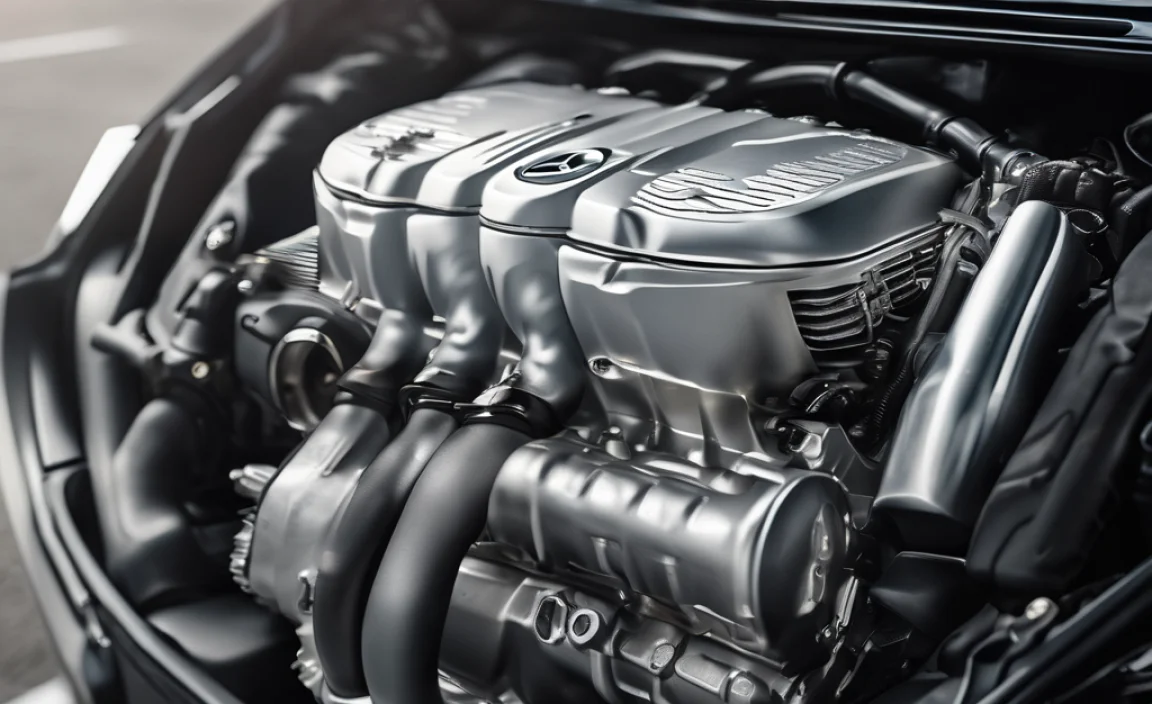
Another piece of M256’s genius is the optional electric auxiliary compressor, often referred to as eZV. This component directly tackles the issue of turbo lag – the delay you sometimes experience when demanding full power from a turbocharged engine.
What is Turbo Lag and How Does eZV Solve It?
Turbochargers use exhaust gases to spin a turbine, which in turn spins a compressor that forces more air into the engine, creating more power. However, it takes time for enough exhaust gas to build up to spin the turbine fast enough, especially from idle or low speeds. This delay is turbo lag.
The eZV is a compact electric motor-driven compressor. It’s placed before the main turbocharger in the intake tract. When the driver demands acceleration, the eZV can spin up almost instantly, providing boost to the engine while the exhaust gases gradually spool up the main turbocharger. This means:
- Instant Throttle Response: The car feels much more responsive, especially at low speeds.
- Elimination of “Hole”: That moment of hesitation before acceleration kicks in is significantly reduced or eliminated.
- Wider Powerband: The engine feels strong and immediate across a broader range of RPMs.
This feature makes a noticeable difference in how the M256 feels to drive, offering a more engaging and effortless experience in daily driving situations, like merging onto a highway or navigating city traffic.
Performance and Efficiency: The M256’s Balance
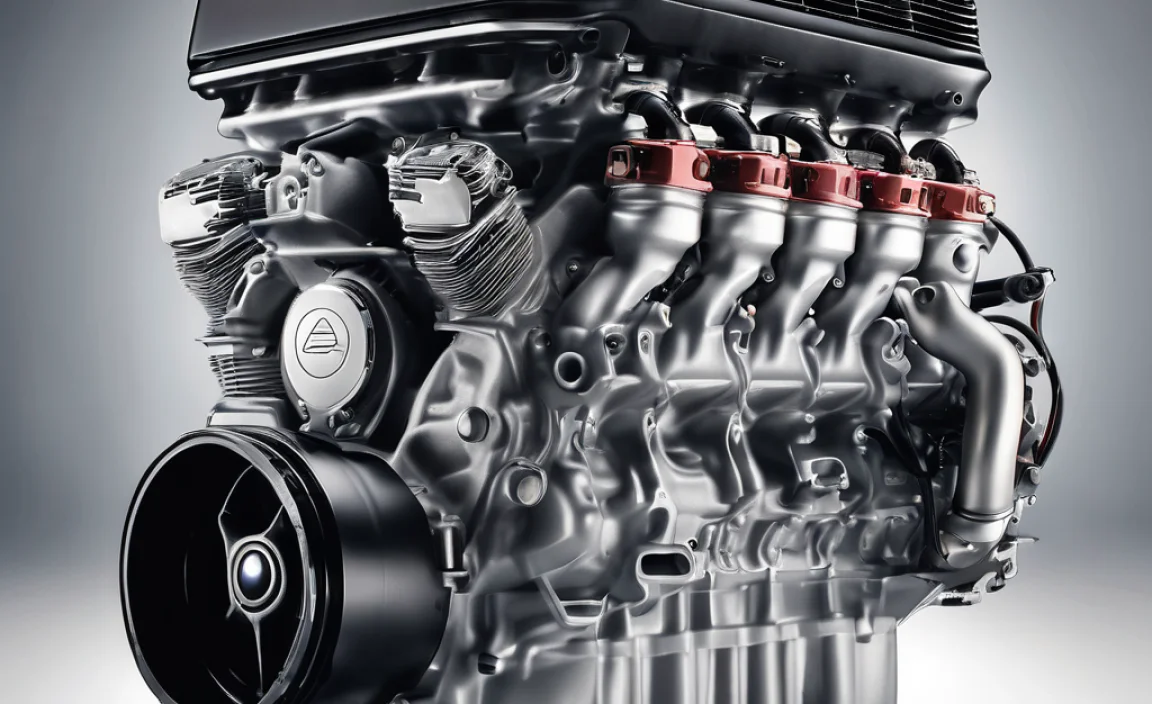
The goal of modern engine design is to deliver plenty of power without guzzling fuel, and the M256 excels at this. Mercedes-Benz engineered this engine to be a well-rounded performer.
Power Outputs
The M256 engine comes in various states of tune, meaning its power output can differ depending on the specific Mercedes-Benz model and year. However, common configurations offer impressive figures:
- Horsepower: Typically ranging from around 362 hp to over 429 hp for standard models. AMG variants can push these numbers even higher.
- Torque: Also substantial, often starting around 384 lb-ft and going up from there, with the EQ Boost adding a significant on-demand torque fill.
This power allows for exhilarating acceleration and confident cruising, feeling powerful and composed in almost any driving scenario. The inline-six configuration itself is known for its inherent smoothness and balance, which contributes to a refined driving experience. Compare this to some other engine configurations:
| Engine Layout | Common Characteristics | M256 Advantage |
|---|---|---|
| Inline-4 (Turbocharged) | Good efficiency, compact, can be powerful but may lack refinement. | Smoother, more balanced power delivery, generally more refined. |
| V6 (Older Mercedes-Benz) | Good power, smoother than inline-4 but can be less balanced than inline-6. | More efficient, quieter, stronger low-end torque with eV Boost. |
| Inline-6 (M256) | Inherently balanced, smooth power, good packaging for its displacement. | All of the above, plus cutting-edge mild-hybrid tech for further efficiency and performance gains. |
Fuel Economy
Despite its power, the M256 is surprisingly fuel-efficient for a six-cylinder engine. Mercedes-Benz uses several strategies to achieve this:
- Advanced Combustion: Optimized fuel injection and ignition control ensure every drop of fuel is used effectively.
- ISG & EQ Boost: As discussed, the electric motor assists the engine, reducing its workload and allowing for features like engine-off coasting. This is a key contributor to improved fuel economy, especially in stop-and-go traffic.
- Start/Stop system: The ISG makes the engine shutdown and restart virtually seamless, preventing fuel waste when stationary.
- Aerodynamic Design of Vehicles: While not part of the engine itself, the cars the M256 powers are designed with excellent aerodynamics to reduce drag, aiding overall efficiency.
While EPA ratings vary by model and drive configuration, the M256-powered vehicles often achieve competitive or class-leading fuel economy for their size and power class. For specific figures, it’s always best to check the official ratings for the exact model you’re interested in. You can often find this information on the EPA’s Fuel Economy website.
Maintenance Considerations for the M256
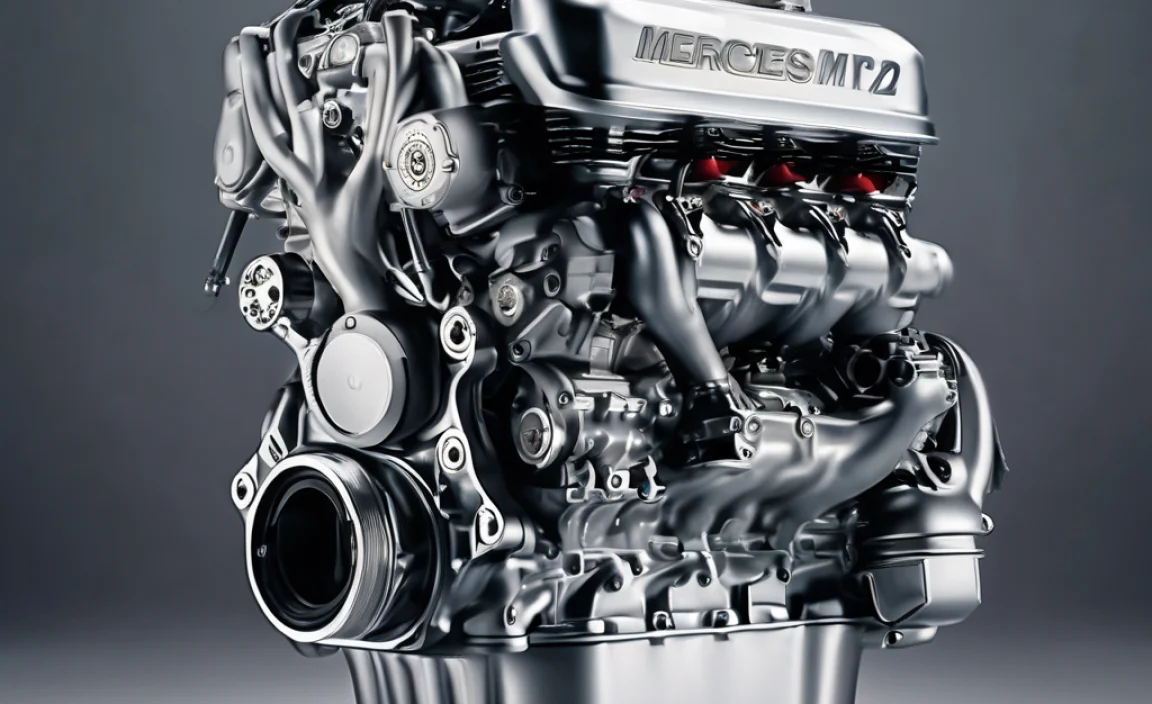
As an owner, understanding the basics of maintaining your M256 engine will help keep it running smoothly for years. Thankfully, Mercedes-Benz engines are built to a high standard, and routine maintenance is key.
Key Maintenance Items
- Oil Changes: This is the lifeblood of your engine. Follow the manufacturer’s recommended oil change intervals. This is usually found in your owner’s manual. Using the correct viscosity and specification of oil (e.g., Mobil 1™ 0W-40 or an equivalent approved by Mercedes-Benz) is crucial. For many M256 engines, this is typically every 10,000 miles or annually, whichever comes first.
- Air Filter Replacement: A clean engine air filter ensures your engine gets the air it needs for efficient combustion. Check it during oil changes and replace it as recommended, generally every 15,000-30,000 miles.
- Cabin Air Filter: While not directly engine-related, a clean cabin air filter is essential for your comfort and healthy air quality inside the vehicle.
- Spark Plugs: These ignite the fuel-air mixture. They have a lifespan and need to be replaced to maintain performance and efficiency. Check your owner’s manual for the recommended interval, often between 40,000 and 60,000 miles for modern spark plugs.
- Coolant: The engine cooling system prevents overheating. Ensure the coolant level is correct and the system is free of leaks. Mercedes-Benz recommends a specific long-life coolant type.
- Belts and Hoses: Inspect drive belts for cracks or wear and check hoses for any signs of aging or leaks. These are critical for various engine functions.
What About the ISG and 48-Volt Battery?
The ISG itself is a sealed unit and generally requires no specific maintenance from the owner’s perspective. It’s designed for the life of the component. The 48-volt battery is also designed for a long service life, typically lasting many years. However, if you notice any warning lights related to the electrical system or a reduction in EQ Boost performance, it’s important to have it checked by a qualified technician at a Mercedes-Benz dealership or a reputable independent specialist.
Important Note: For any work involving the 48-volt system, it is highly recommended to consult a technician trained on high-voltage automotive systems. These systems carry a different risk profile than standard 12-volt systems. For DIY enthusiasts, sticking to the more conventional maintenance items like oil and filters is a safe and effective approach.
Common Issues and Troubleshooting (Beginner Friendly)
While the M256 is a robust engine, no engine is entirely immune to issues. Here are a few things you might encounter and some simple troubleshooting steps.
Symptom: Rough Idle or Hesitation
Possible Causes:
- Clogged fuel injectors
- Dirty air filter
- Worn spark plugs
- Issues with the ignition coils
Beginner Troubleshooting:
- Check if the engine air filter needs replacement.
- Ensure you are using high-quality fuel from a reputable station.
- Listen for any unusual noises.
When to see a professional: If the problem persists, it’s best to consult a Mercedes-Benz technician, as it could indicate issues with fuel delivery or ignition systems that require specialized diagnostic tools.
Symptom: Reduced Power or “Check Engine” Light
Possible Causes:
- Malfunctioning oxygen sensor
- Turbocharger issues (wastegate, boost leaks)
- Catalytic converter problems
- Issues with the electric auxiliary compressor (if equipped)
Beginner Troubleshooting:
- Check your gas cap is tightened properly—a loose cap can trigger a check engine light for emissions issues.
- Note down any specific symptoms when the light came on (e.g., during acceleration, at idle).
When to see a professional: A “Check Engine” light, especially with reduced power, indicates a diagnostic code has been stored in the Engine Control Unit (ECU). A professional can read these codes to pinpoint the exact problem. For turbocharger or eZV issues, professional diagnosis is essential.
Symptom: Noticeable Noise or Vibration
Possible Causes:
- Loose or worn engine mounts
- Exhaust system leaks
- Accessory belt issues
Beginner Troubleshooting:
- Carefully inspect visible belts for wear and tear.
- Listen to see if the noise changes with engine speed.
When to see a professional: Engine mounts and exhaust system issues require careful inspection and often specialized lifting equipment. Vibrations that don’t feel right should always be addressed by a mechanic.
Always refer to your official Mercedes-Benz owner’s manual for detailed troubleshooting specific to your model year. For safety and accuracy, major repairs or diagnoses should be left to qualified professionals.
The Future of the M256 and Mercedes Performance
The M256 engine represents Mercedes-Benz’s commitment to developing highly efficient and powerful internal combustion engines, even as the brand transitions towards electrification. It serves as a bridge technology, incorporating hybrid elements that pave the way for future advancements.
Evolution and Integration
Mercedes-Benz has continuously refined the M256 across different model generations. Further integration with mild-hybrid and plug-in hybrid systems is expected, enhancing its capabilities. The core architecture allows for adaptability, meaning it can be paired with electric motors of varying sizes and battery capacities.
While fully electric vehicles are a significant part of Mercedes-Benz’s future, engines like the M256 will likely remain relevant for a considerable period, especially in models where extreme range or rapid refueling is a priority. The technology learned and implemented in the M256, particularly the ISG and its energy management, is invaluable for the development of next-generation powertrains, whether they are purely electric or hybrid.
The “Genius Power” of the M256 is not just about raw performance; it’s about intelligent design that balances power, efficiency, and refinement in a way that enhances the driving experience for everyday owners. It’s a testament to engineering innovation that makes driving a Mercedes-Benz a truly premium experience.
Frequently Asked Questions (FAQ)
What cars come with the Mercedes M256 engine?
The M256 is used in a wide variety of Mercedes-Benz models, including many C-Class, E-Class, G-Class, S-Class, GLE, and GLS variants, as well as some CLA and GLC models. It’s also found in certain EQ lineup models that still utilize an internal combustion engine and in specific AMG-tuned versions.
Is the M256 engine a V6 or an inline-six?
The M256 is an inline-six engine. This means all six cylinders are arranged in a straight line. This configuration is known for its inherent balance and smoothness, offering a refined driving experience.
What is EQ Boost on the M256?
EQ Boost is Mercedes-Benz’s term for the mild-hybrid functionality powered by the Integrated Starter-Alternator (ISG). It uses a 48-volt electrical system to provide a temporary electric boost of power and torque, improve acceleration, and enable features like smoother start/stop and engine-off coasting.
Does the M256 engine have turbo lag?
While modern turbocharging is very efficient, some lag can still be present. However, many M256 engines are equipped with an electric auxiliary compressor (eZV) that works alongside the turbocharger to provide near-instant boost, significantly reducing or eliminating noticeable turbo lag.
How often should I change the oil in my M256 engine?
Typically, Mercedes-Benz recommends an oil change every 10,000 miles or once per year, whichever comes first. Always consult your specific vehicle’s owner’s manual for the exact interval and the correct type of engine oil and filter.
Is the 48-volt battery in the M256 system a big concern for owners?
The 48-volt battery is designed for a long lifespan and generally requires no maintenance from the owner. While it is a component that can eventually need replacement, it’s not typically an item that fails prematurely or requires frequent attention under normal operating conditions.
Are M256 engines reliable?
The Mercedes M256 engine is generally considered very reliable, thanks to its advanced engineering and robust construction. Like any complex engine, adherence to a regular maintenance schedule is crucial for maintaining its long-term reliability and performance.
Conclusion
The Mercedes-Benz M256 6-cylinder engine is a prime example of automotive innovation, seamlessly blending potent performance with impressive fuel efficiency. Its ingenious design, particularly the integration of the EQ Boost mild-hybrid system and the optional electric auxiliary compressor, makes for a superior driving experience – smooth, responsive, and refined. Whether you’re accelerating on the highway, navigating city streets, or simply enjoying a quiet drive, the M256 is engineered to deliver power with intelligence.
Understanding its key technologies, like the ISG and eZV, helps you appreciate the “Genius Power” under the hood. While this advanced engine requires regular maintenance, the steps for routine care – such as oil changes and filter replacements – are straightforward and vital for its longevity. By staying on top of these simple tasks and knowing what to look for, you can ensure your M256-powered Mercedes-Benz continues to provide that signature blend of luxury, performance, and efficiency for many miles to come.
Embrace the technology, follow the maintenance guidelines, and enjoy the exceptional drive that the M256 engine offers. It truly represents a peak in modern internal combustion engine design.